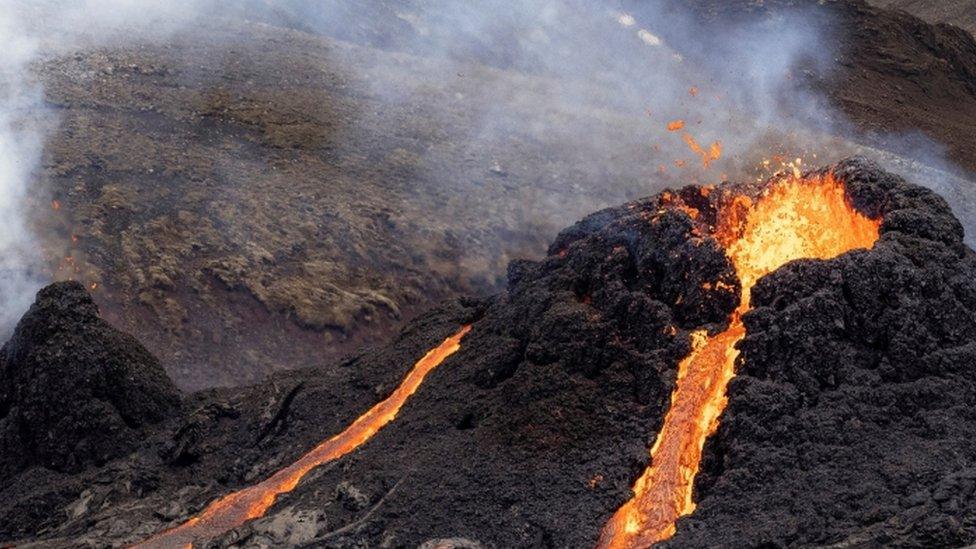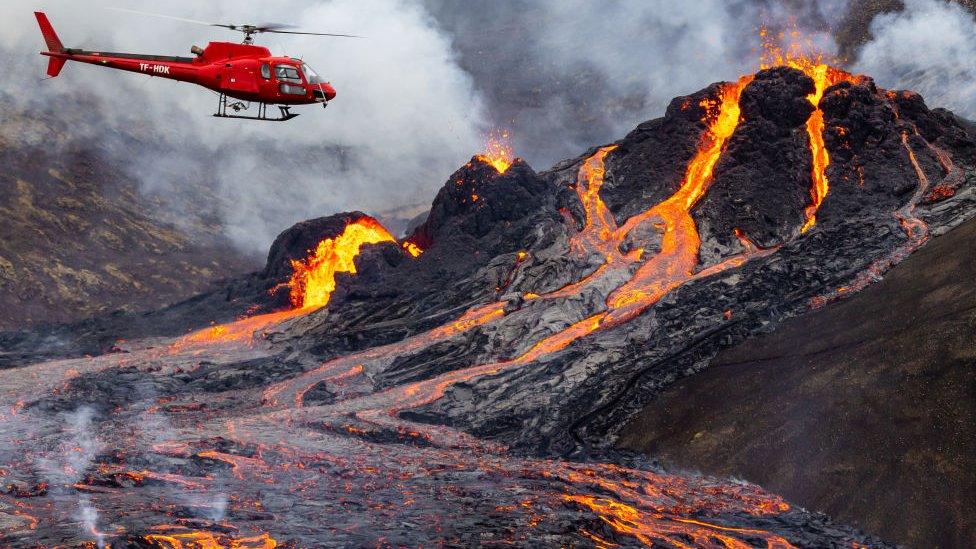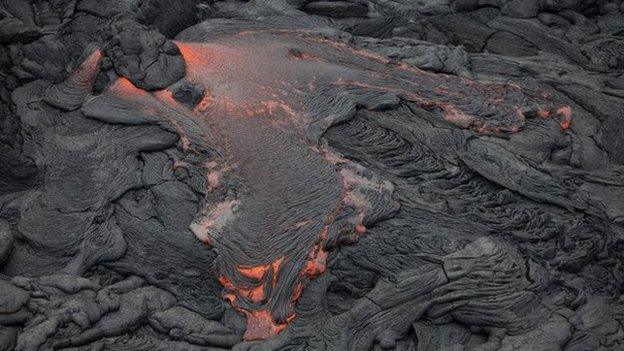Iceland volcano: Lava spilling is 'subsiding'
- Published
- comments

The lava burst through cracks in the Earth's crust
A volcano that erupted near Iceland's capital Reykjavik seems to be subsiding, scientists say.
Iceland has recorded more than 40,000 earthquakes in recent weeks. Although the majority weren't strong enough to feel, they did suggest a volcano eruption could occur soon.
The volcano's fissure, which is a word used to describe the crack or opening in the Earth's crust, is about 500-700 metres long and is located near the mountain Fagradalsfjall on Reykjanes peninsula.
The eruption hasn't caused any major disruptions to the country. However, the public have been advised to close their windows and stay indoors.
Why are there so many earthquakes in Iceland right now?
Iceland is the biggest and most active volcanic region in the whole of Europe.
The country sits between the Eurasian and North American tectonic plates.
These plates are drifting in opposite directions and the shifting is partly responsible for all the volcanic activity in the country.
The Icelandic Meteorological Office says the eruption started at around 8.45pm on Friday, and this was later confirmed via webcams and satellite images.
A coastguard helicopter was sent to survey the area and it sent back the first pictures of the lava streams emerging from the volcano after the eruption.
The biggest threat was pollution from the gases that had been released, and nearby residents were asked to keep their windows shut.

"I can see the glowing red sky from my window," Rannveig Gudmundsdottir, who lives in a town just five miles from the eruption, told the Reuters news agency.
Iceland certainly isn't new to volcanic eruptions. The last took place back in 2014, when the country's Bardarbunga volcano awoke and the eruption didn't end until five months later.

Lava from the volcano lit the sky red
This led Iceland's to biggest flow of basalt, which is the dark coloured volcanic rock formed from the rapid cooling of lava, in more than 230 years.

The Grimsvotn volcano spouted an ash cloud 25 kilometres into the sky back in 2011
The Grimsvotn volcano, which is Iceland's most active volcano, erupted in May 2011. It spouted an ash cloud a huge 25 kilometres into the sky and led to lots of flight cancellations.
- Published30 August 2014
- Published16 August 2015

- Published12 October 2017

